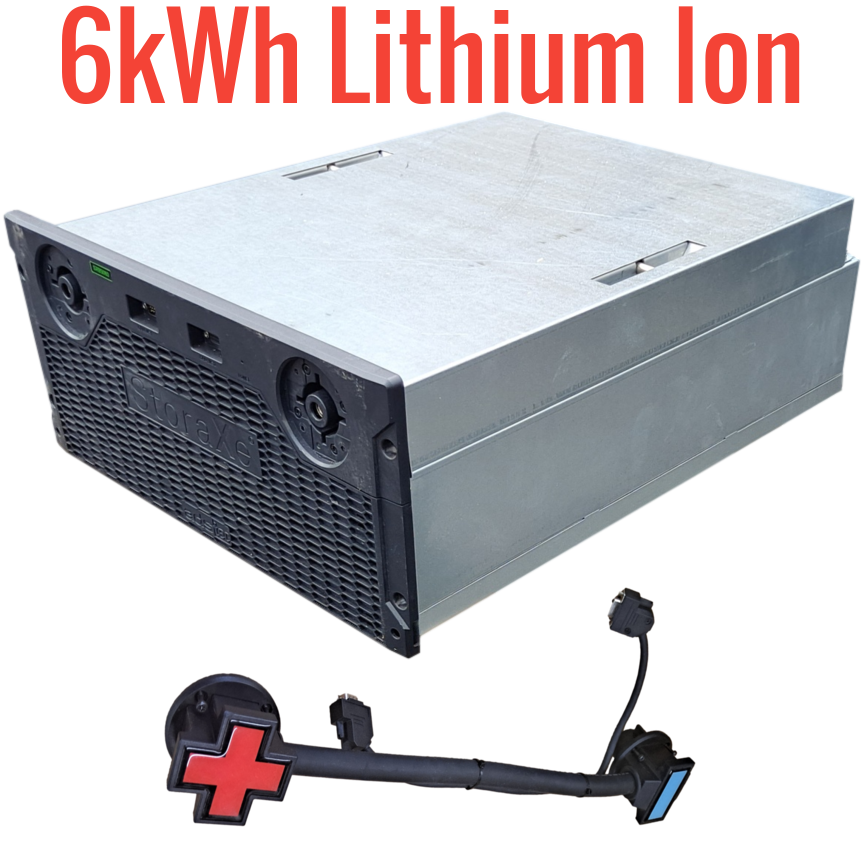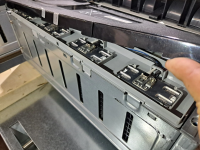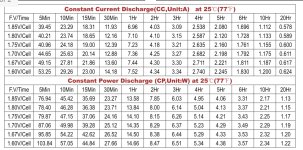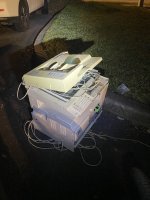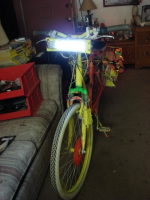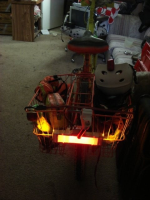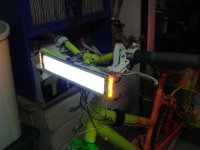jetpackjbd
100 W
Just wanted to share a bit about my scooter. I bought it for $20 on Facebook marketplace a few months ago in bad shape as a “fun” project. When I first got it, it was covered in rust, the batteries were dead, and the chain was rusted and broken:



Eventually I cleaned up most of the rust, changed the chain, and replaced the batteries. It worked, and I only spent about $100 in parts for a zippy, unique scooter that could go off-road! And then it started overheating frequently. And then it slightly caught fire…
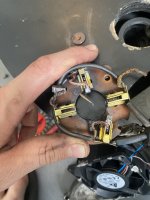

Haha, whoops… I attempted to make a new brush card from scratch (the piece that’s charred), but I couldn’t get good enough tolerances with basic hand tools. Plus the issue was likely some shorted coils, which would cause the same problem again. The motor is impossible to find online, or anything directly compatible. The only way I could buy it was over the phone, for $150, from the nearly dead company’s warehouse. And it would’ve been a used motor, not even brand new. I have a feeling that even if I bought the same motor, it would eventually suffer the same tragic death. The motor was way too small for the power it made, which makes me think that it was designed like a 12v motor with slightly higher rated thermal coating, and overvolted to 24v. It didn’t even have an internal fan; it was external!
Eventually I decided to just retrofit something else, and the closest spec motor at a decent price was a 500w 24v MY1020 scooter motor for $65 on eBay. While it’s not compatible with the original mounting holes, and is quite a bit larger, it does work. I considered drilling holes into the old mounts to make it fit, but there wasn’t enough space on them. I ended up creating a new mount out of scrap plywood, since I hate working with metal. I don’t have a drill press or a welder so doing it all with a $30 hand drill and old bolts did not sound like fun. After two days working on the mounts, I was finished!

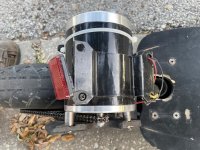
While it’s currently “working”, it still has issues. The biggest issue is that I reused all of the rusty stripped screws. I can’t get the motor in tight enough so I was stranded recently when one out of the two screws fell off. They’re not quite long enough either, so the motor sprocket is a bit off from the wheel sprocket causing the chain to clack and (nearly) fall off at times. When I heard it I thought my electric motor had rod knock. I’ll try to find some new ones at some point. Motor Noise
I plan on doing a bunch of upgrades like changing out the sprocket from a 13 tooth to a 17 tooth. The nut holding it onto the shaft had Loctite on it, and stripped out when I tried to take it off. So that’ll be fun to deal with. I also want to add a seat and turn signals to it at some point. I temporarily got my bike seat to work on it by using a kids push scooter handle as a seat post, but it snapped after a few miles. The hole for a seat is a weird size in the scooter so finding a tube with the right internal and external diameters is difficult. Still, it’s a fun project that’s keeping me busy!



Eventually I cleaned up most of the rust, changed the chain, and replaced the batteries. It worked, and I only spent about $100 in parts for a zippy, unique scooter that could go off-road! And then it started overheating frequently. And then it slightly caught fire…


Haha, whoops… I attempted to make a new brush card from scratch (the piece that’s charred), but I couldn’t get good enough tolerances with basic hand tools. Plus the issue was likely some shorted coils, which would cause the same problem again. The motor is impossible to find online, or anything directly compatible. The only way I could buy it was over the phone, for $150, from the nearly dead company’s warehouse. And it would’ve been a used motor, not even brand new. I have a feeling that even if I bought the same motor, it would eventually suffer the same tragic death. The motor was way too small for the power it made, which makes me think that it was designed like a 12v motor with slightly higher rated thermal coating, and overvolted to 24v. It didn’t even have an internal fan; it was external!
Eventually I decided to just retrofit something else, and the closest spec motor at a decent price was a 500w 24v MY1020 scooter motor for $65 on eBay. While it’s not compatible with the original mounting holes, and is quite a bit larger, it does work. I considered drilling holes into the old mounts to make it fit, but there wasn’t enough space on them. I ended up creating a new mount out of scrap plywood, since I hate working with metal. I don’t have a drill press or a welder so doing it all with a $30 hand drill and old bolts did not sound like fun. After two days working on the mounts, I was finished!


While it’s currently “working”, it still has issues. The biggest issue is that I reused all of the rusty stripped screws. I can’t get the motor in tight enough so I was stranded recently when one out of the two screws fell off. They’re not quite long enough either, so the motor sprocket is a bit off from the wheel sprocket causing the chain to clack and (nearly) fall off at times. When I heard it I thought my electric motor had rod knock. I’ll try to find some new ones at some point. Motor Noise
I plan on doing a bunch of upgrades like changing out the sprocket from a 13 tooth to a 17 tooth. The nut holding it onto the shaft had Loctite on it, and stripped out when I tried to take it off. So that’ll be fun to deal with. I also want to add a seat and turn signals to it at some point. I temporarily got my bike seat to work on it by using a kids push scooter handle as a seat post, but it snapped after a few miles. The hole for a seat is a weird size in the scooter so finding a tube with the right internal and external diameters is difficult. Still, it’s a fun project that’s keeping me busy!



